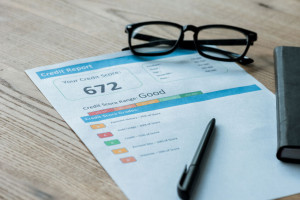 As you continue to do business in Canada — whether it’s a more recent development or it’s been the case your entire life — one thing is clear: it’s a credit-driven economy. This may be more true than in the States or other places where the financial system runs considerably differently.
As you continue to do business in Canada — whether it’s a more recent development or it’s been the case your entire life — one thing is clear: it’s a credit-driven economy. This may be more true than in the States or other places where the financial system runs considerably differently.
Since credit is used in more abundance in Canada, it’s important to check on credit scores when dealing with customers. It’s good business practice to know the ins and outs of how those scores can be obtained by you as a check against possible debt.
We looked at some information from the Arrive In and Chron Small Business websites to get more perspective on what’s a good credit score for a Canadian consumer, as well as some advice on what you can do to obtain those scores.
The range of scores that work the best
First, let’s talk about what constitutes a solid score. Like in other countries, a company like Equifax or TransUnion does the credit reports for individuals, and therefore assigns a three-digit score based on a person’s record with paying debt from credit.
In Canada, a score of 743 to 789 is considered “good,” while 790 to 830 is considered “very good.” The top range is 833 to 900, while anything between 300 and 742 is considered “poor” or “fair.” These ranges vary a bit from other countries, so it’s best to think about these ranges instead of what you may know exists in the US or other countries.
Also, it’s important to note that everyone who is being analyzed for creditworthiness in Canada starts at zero. Credit scores from other countries don’t get transferred if a customer is doing business in Canada for the first time.
How you can see the credit score
The first important step to finding out a credit score is to have an application that potential debtors fill out. You’ll need some information from them, including credit references and other information that the credit score company will need to know. The application also needs to have a disclosure section where the customer permits you to check on credit.
You can then contact the credit bureaus to see what the score is, although that’s just part of the report. You’ll also be able to see a more full report of transactions associated with the customer, to see how that low or high score was earned. This is important to parse well, as it shows patterns that can indicate if they’re the right customer for you.
It’s also important to make the process as prompt and seamless as possible for the customer. Giving them details on how they qualify or don’t as part of the process is essential to gaining and keeping their business.
Stepping into the shoes of your customers
Credit scores are important to know for your customer base. It’s also good to note that it’s just one step along the process of accruing debt that can cause anxiety from those same customers. This type of service you provide can go a long way to bringing a greater sense of empathy and bolster the relationship you have with your base.
At ARO, we’ve made it our goal to integrate a human touch into every interaction, while still helping businesses reach their fullest potential. Find out more about what we have to offer businesses at our website.

